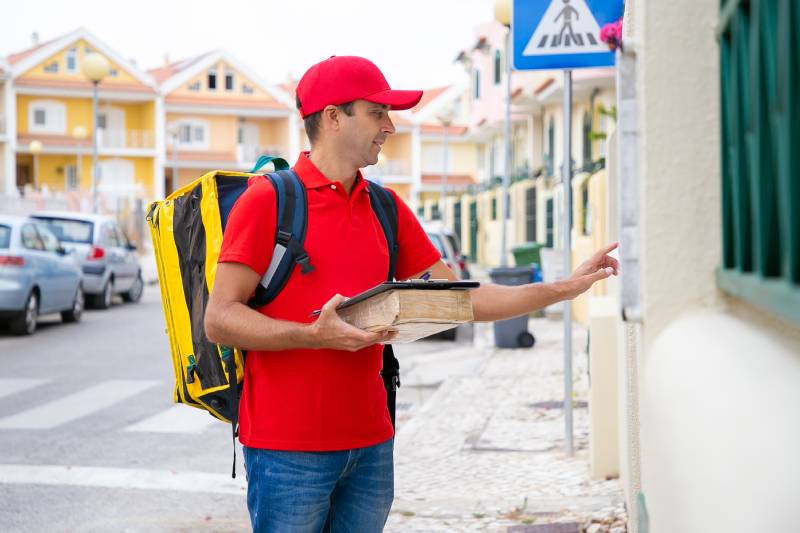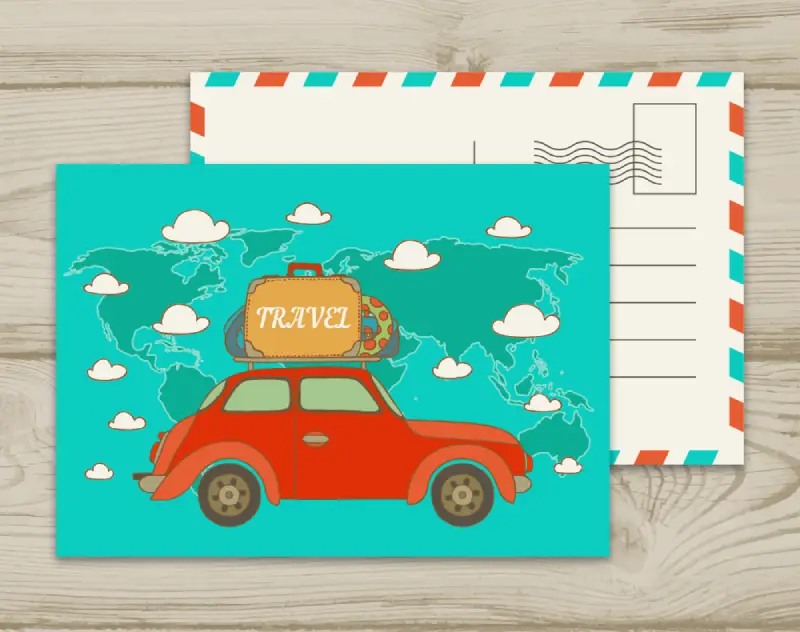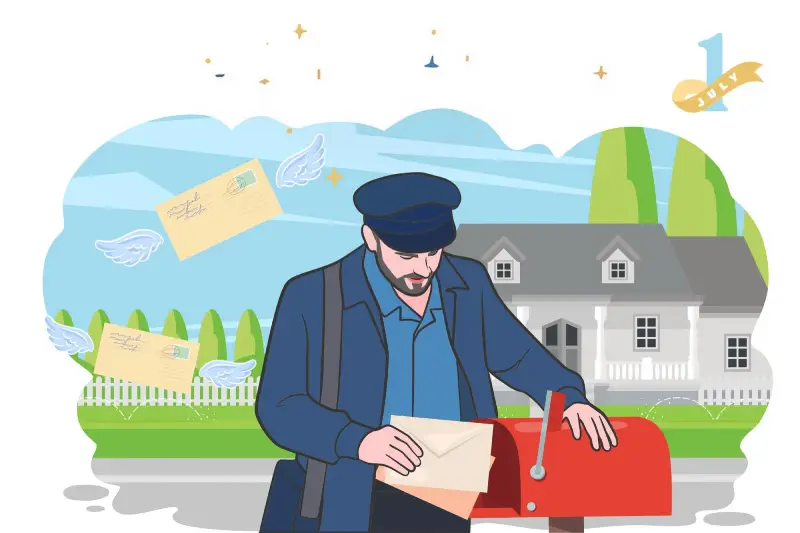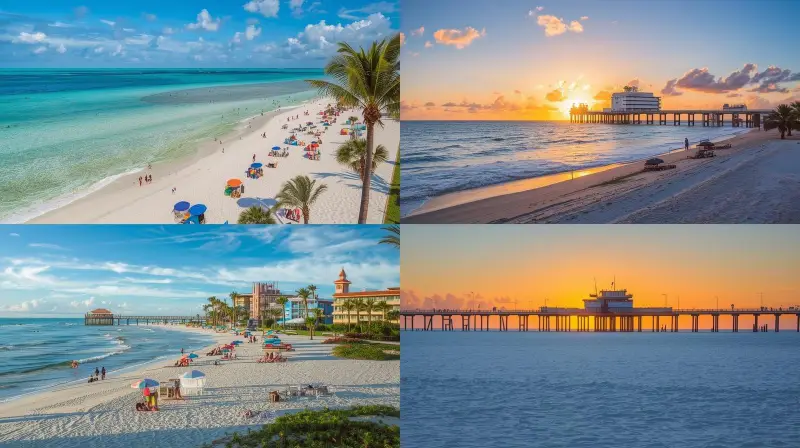How to Receive Postal Mail and Packages While Traveling?

Table of Contents
ToggleTraveling is the perfect escape, offering the freedom to explore, the thrill of new experiences, and the joy of discovering places you’ve only dreamed of. Wandering through vibrant city streets, soaking in the serenity of a remote beach, or trekking rugged mountain paths, life on the move is full of excitement. However, one practical question often lingers in the back of a traveler’s mind: how do you manage your mail and packages when you’re not at home?
While you’re out there exploring, life back home doesn’t pause. Bills still need attention, important documents may require your response, and the package you ordered before setting off might be sitting unattended. It’s easy to see how these small details could disrupt the otherwise seamless rhythm of travel. But don’t worry, managing your postal needs while on the road doesn’t have to be a bother if you plan accordingly. With the right approach and tools, you can ensure that your mail, whether physical or digital, and your packages follow you or are taken care of appropriately.
From traditional methods to tech-savvy solutions, this guide will help you navigate the logistics of postal management so you can focus on enjoying the experiences and your well-deserved vacation that make travel so rewarding.
Managing Regular Postal Mail While Traveling

Before jumping into the logistics of packages, let’s address the basics of managing everyday postal mail because while you might be on vacation, your mail certainly isn’t. Bills, bank statements, subscriptions, and letters keep rolling in even when you’re out exploring the world. Managing this kind of correspondence while traveling is often simpler than dealing with packages, thanks to digitalization.
Most of the mail you receive is purely informational, like statements or updates, which don’t necessarily require the physical copy to be useful. A digital scan or even a photo of the original document can often serve the same purpose, allowing you to stay informed without being tied down by physical mail. For travelers, this makes remote access to mail super convenient and a game-changer.
Many innovative companies have tapped into this need, creating services that provide comprehensive mail management solutions for travelers. But before diving into these modern tools, it’s worth revisiting the old-school approach that may still work for some people: the trusty physical P.O. box.
While traditional, a physical P.O. box remains a reliable option for those who don’t mind occasionally retrieving their mail in person or arranging for it to be forwarded. It’s a simple, no-frills solution that works best for those with a steady home base or predictable travel schedule. Let’s look into it in more detail.
1. Use a Physical P.O. Box

A physical P.O. box, or post office box, is one of the most straightforward ways to handle your mail while traveling. It’s a secure, lockable mailbox located inside a post office that you can rent for a fee, providing a stable address for your mail while you’re on the move. This solution is especially appealing if you value privacy, live in a remote location without reliable home delivery, or need faster access to mail without waiting for a postman. For frequent travelers, a P.O. box offers consistency and peace of mind, ensuring that all your mail has a reliable destination while you’re away.
The Benefits of a P.O. Box
Reliability and Security: Your mail is stored securely in a locked box, protected from theft or weather-related damage. This is particularly important if you’re away for extended periods.
Privacy Protection: Using a P.O. box shields your home address from businesses or organizations you’d prefer not to share it with, reducing risks like identity theft.
Accessible in Many Countries: P.O. boxes are widely available, and services like the USPS in the United States offer options at post offices nationwide.
Stable Address for Travelers: A P.O. box is a solid choice for travelers without a permanent residence who want to avoid burdening friends or family with their mail.
The Drawbacks of a P.O. Box
Despite its advantages, a P.O. box has several limitations that may make it less practical for some travelers:
Physical Mail Only: A P.O. box holds your mail until you can personally retrieve it, meaning you won’t have access to critical information while on the road unless you return home or have the mail forwarded.
Mail Forwarding Costs: While many P.O. boxes offer mail forwarding services, the cost can be significant. Additionally, all mail, including junk, gets forwarded, which isn’t ideal if most of your mail might be low priority.
Size Limitations: Smaller P.O. boxes have limited capacity and can quickly overflow if you receive more mail than expected, often requiring you to upgrade to a larger, more expensive option.
Parcel Delivery Restrictions: Many courier companies, like FedEx or UPS, don’t deliver to P.O. boxes, as there’s no one to sign packages. Similarly, some online retailers won’t accept a P.O. box as a shipping address.
Professional Limitations: If you’re running a business while abroad, using a P.O. box may harm your professional image. Many businesses prefer or require a physical street address, and P.O. boxes are not accepted as a business address when setting up an LLC or corporation.
Cost Considerations: Rental costs for P.O. boxes vary widely depending on location, box size, and rental duration. For instance, in the U.S., a small box that holds 10–15 letters may cost around $58 for six months, while a larger box suited for packages could cost over $500 for the same period.
Who Is a P.O. Box Best Suited For?
A P.O. box can be a viable solution if:
You’re traveling for a short period and don’t expect to receive high volumes of mail.
Most of your incoming mail is non-urgent or junk, and you don’t need immediate access to critical documents.
You don’t require a professional street address for business purposes.
While a P.O. box is a practical and straightforward option for managing mail, it may not be the most efficient solution for long-term travelers or those who require regular access to their correspondence. For more flexible and high-tech alternatives, virtual mailboxes might better meet the needs of modern-day globetrotters.
2. Get a Virtual Mailbox

A virtual mailbox, also known as an online mailbox or online P.O. box, is a modern and tech-savvy solution for managing mail when you’re on the move. It’s particularly useful for extended trips, high volumes of postal mail, or if you need immediate access to your correspondence. Additionally, virtual mailboxes can offer a physical street address which can be perfect for receiving packages or presenting a professional image for personal or business purposes. Unlike a traditional P.O. box, a virtual mailbox provides greater flexibility, accessibility, and functionality, making it a favorite among digital nomads and long-term travelers.
How a Virtual Mailbox Works?
Mail Reception: Your mail is sent to a designated physical address managed by the virtual mailbox service.
Notification: When mail or packages arrive, the service scans the envelopes and uploads the images to your online dashboard, notifying you via email.
Action Options: Through your dashboard, you can choose what happens next:
Open and Scan: Have the contents of an envelope scanned for immediate viewing.
Forward: Send selected items to an address of your choice.
Store: Keep the mail in secure storage, often free for the first 30 days.
Shred or Recycle: Safely dispose of mail you no longer need.
Return to Sender: Redirect unwanted mail back to the sender.
Deposit Checks: Some services allow you to deposit checks into your bank account.
The Benefits of Virtual Mailboxes
Virtual mailboxes are a true game-changer for travelers and remote workers, offering a host of advantages over traditional solutions:
Immediate Access to Mail: View and manage your mail online as soon as it arrives. This eliminates the need to wait for physical delivery or make trips to a post office.
Professional Physical Address: Perfect for business use, a virtual mailbox provides a professional street address, enhancing your credibility with clients or vendors.
Secure and Flexible Options: Your mail is handled securely, and you have full control over what happens to it.
Package Compatibility: Unlike P.O. boxes, virtual mailboxes can accept packages from couriers like FedEx, UPS, and DHL.
Convenience for U.S. Citizens: Services can even deposit checks on your behalf, saving time and hassle.
1. Potential Drawbacks to Consider
While virtual mailboxes are incredibly convenient, they’re not without limitations:
Cost: Plans vary depending on the provider and features, with most offering tiered pricing based on the number of mail items, scans, or storage needs. Additional fees may apply for exceeding limits or for premium services like package consolidation.
Identity Verification: To set up a virtual mailbox, you’ll likely need to complete an identity verification process. For U.S. citizens, this typically involves a notarized USPS Form 1583, which grants the provider permission to handle your mail.
Notarization Process: While notarization can be done in person, travelers overseas may face challenges completing the process. Thankfully, services like NotaryCam allow for convenient e-notarization, though international fees can be higher.
2. Pricing and Identity Verification
Virtual mailbox plans generally charge based on the volume of mail you expect to receive. Additional services, such as forwarding or check deposits, may come with separate fees. As part of the setup, most providers require proof of identity and address. For U.S. citizens, completing the notarization of USPS Form 1583 is essential.
If notarization while abroad seems daunting, NotaryCam offers a seamless online solution. This service connects you with a certified U.S. notary via webcam for real-time e-notarization. After electronically signing the form, the notary applies their seal, making the document legally valid across all U.S. states. For U.S. customers, this costs around $25 per signature, with international pricing at $79 per signature.
3. Ask a Friend or Family Member
For travelers who receive only a small amount of mail, enlisting the help of a trusted friend or family member can be a straightforward and low-cost solution. Essentially, they can act as your personal mail assistant, notifying you when mail arrives, scanning or photographing the contents to send via email or messaging apps, and forwarding any essential documents or packages to your current location. This personalized approach works well for those with minimal postal needs and a reliable support system willing to help.
However, this option does come with some caveats. While it’s a convenient and cost-effective solution for occasional mail, it’s not ideal if you receive large quantities of correspondence or packages, as managing your mail could quickly become overwhelming for the person helping you. Offering financial compensation or occasional favors in return can make this arrangement feel more balanced. If your postal volume starts resembling a mountain instead of a molehill, though, a virtual mailbox service might be a better, more scalable solution for everyone involved.
4. Digitize Most of Your Mail
Why deal with the hassle of physical mail when most of it can be digitized? Transitioning to paperless communication is not only a practical solution for travelers but also a step toward reducing your environmental footprint. Switching bank statements, utility bills, and subscriptions to email can eliminate a significant portion of your incoming physical mail. Many companies already offer e-bills and paperless options, so it’s often as simple as updating your preferences online.
For contracts and official paperwork, apps like DocuSign make signing and sending documents effortless, while e-books and digital magazines can replace physical subscriptions, making your mail volume even lighter.
Although going paperless takes some upfront effort with contacting businesses and organizations to request digital alternatives but it’s a one-time investment that pays off in simplicity and sustainability. Once your physical mail is reduced to an occasional piece, you can manage the rare arrival with minimal assistance or even indulge in a virtual mailbox service sparingly.
Going digital streamlines your life, saves you money on P.O. boxes or mail forwarding services, and contributes to saving trees, making it a win-win for you and the planet.
Receiving Packages While Traveling

Mail is one thing, but packages are a whole different beast. Be it an Amazon order, an urgent delivery, or a gift from home, getting packages while traveling can feel tricky to manage. Thankfully, there are multiple strategies to ensure your items find you, no matter where you wander.
1. Use a Parcel Locker
Parcel lockers have become a popular and convenient solution for securely receiving packages, especially for travelers and busy individuals. These lockers provide a secure holding spot for your parcels, allowing you to collect them at your convenience. Services like FedEx Delivery Manager lockers, UPS Access Points, and local independent locker networks offer flexible options for retrieving your packages. During checkout, you simply select a locker location as the delivery address. Once your parcel arrives, you’ll receive a unique access code to retrieve it.
While parcel lockers are secure, often available 24/7, and perfect for urban settings, their availability can be limited in rural areas. Additionally, many services are confined to specific countries or tied to particular retailers, meaning they’re not universally accessible. Despite these limitations, parcel lockers are an excellent choice for travelers who are staying in one spot for a few days and want a safe, flexible, and hassle-free way to receive their deliveries.
2. Deliver to a Post Office (General Delivery) at Your Travel Spot
Many postal systems worldwide offer a service known as “general delivery” (or “poste restante” in Europe), which provides a practical solution for travelers without a fixed address. This service allows you to have mail or packages sent to a post office in your destination city, where they’ll be held until you arrive to collect them. In the U.S., for example, USPS holds general delivery items for up to 30 days, and the service is typically free. In other countries, fees may apply, so it’s a good idea to confirm with the local post office before using the service.
To use general delivery, the sender simply addresses the package to your name with “General Delivery” written at the top, followed by the target post office’s address. While this system is generally reliable, issues can occasionally arise. Packages can be misplaced in busy post offices, or staff may be unfamiliar with the service. Additionally, most post offices prefer not to handle items delivered by private couriers like FedEx or DHL. To avoid complications, it’s wise to contact the post office ahead of time to confirm their process. Despite these minor drawbacks, general delivery remains a useful option, especially for remote travelers or those visiting areas where other mail services might not be available. As an added bonus, Amazon orders can often be sent via general delivery, making it a flexible solution for travelers.
Final Thoughts
Traveling doesn’t mean sacrificing organization or missing out on important correspondence and deliveries. With options like virtual mailboxes, parcel lockers, and digitized mail, you can stay connected to your postal life while roaming the globe. The key is to find the system that fits your lifestyle and travel style.
By combining a mix of these solutions, you’ll be free to explore the world without worrying about a missed package or stack of uncollected mail back home. Now, pack your bags and get moving stress free, knowing your mail and packages are taken care of!
Author
Book your fondest memory here
Popular Posts
Best Family-Friendly Beaches in Florida
With its pristine beaches and warm waters, Florida is a…
Best Beaches in Florida: From Clearwater to South Beach
Florida is a beach lover’s paradise, and that’s no exaggeration.…
Best Places to Visit in Florida During Winter
Winter is the perfect time to step away from the…
Categories
- Best Places (25)
- Destinations (26)
- Experiences (21)
- Photography (1)
- Travel (48)
- Travel Products (7)
- Trip Style (8)
Search With Tags
Join Our Newsletter
Get Your Daily
Dose
Of Travel Inspiration
"*" indicates required fields


